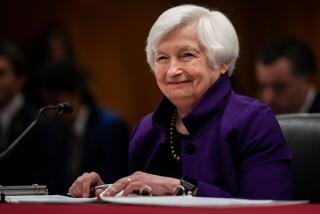FDIC May Raise Bank Fees to Bolster Fund
- Share via
WASHINGTON — The Federal Deposit Insurance Corp. is considering assessing banks an additional $1 billion a year to strengthen the fund that protects depositors when banks fail.
Eroded by the worst string of bank failures since the 1930s, the FDIC bank insurance fund has lost money for two years in a row and the fund’s safety margin has dropped to the lowest level ever.
The FDIC had counted on the failures to abate this year and last spring projected that for 1990 the bank insurance fund would break even -- by paying out about as much for losses as it took in from fees charged banks and interest on its invested reserves.
But two weeks ago, FDIC Chairman L. William Seidman told Congress the deposit insurance agency expects to lose another $2 billion this year, which would reduce the fund to about $11 billion. That will leave only 60 cents in reserves for every $100 in federally insured bank deposits, less than half the level that Congress wants the FDIC to maintain.
Industry officials and congressional sources expect the FDIC’s board of directors Tuesday to set in motion the process of seeking a special increase in fees to replenish the fund. There is widespread speculation in the banking industry that the FDIC will increase the fee, but no clue about whether the FDIC will seek the maximum $1.125 billion rise permitted by law.
More to Read
Inside the business of entertainment
The Wide Shot brings you news, analysis and insights on everything from streaming wars to production — and what it all means for the future.
You may occasionally receive promotional content from the Los Angeles Times.










